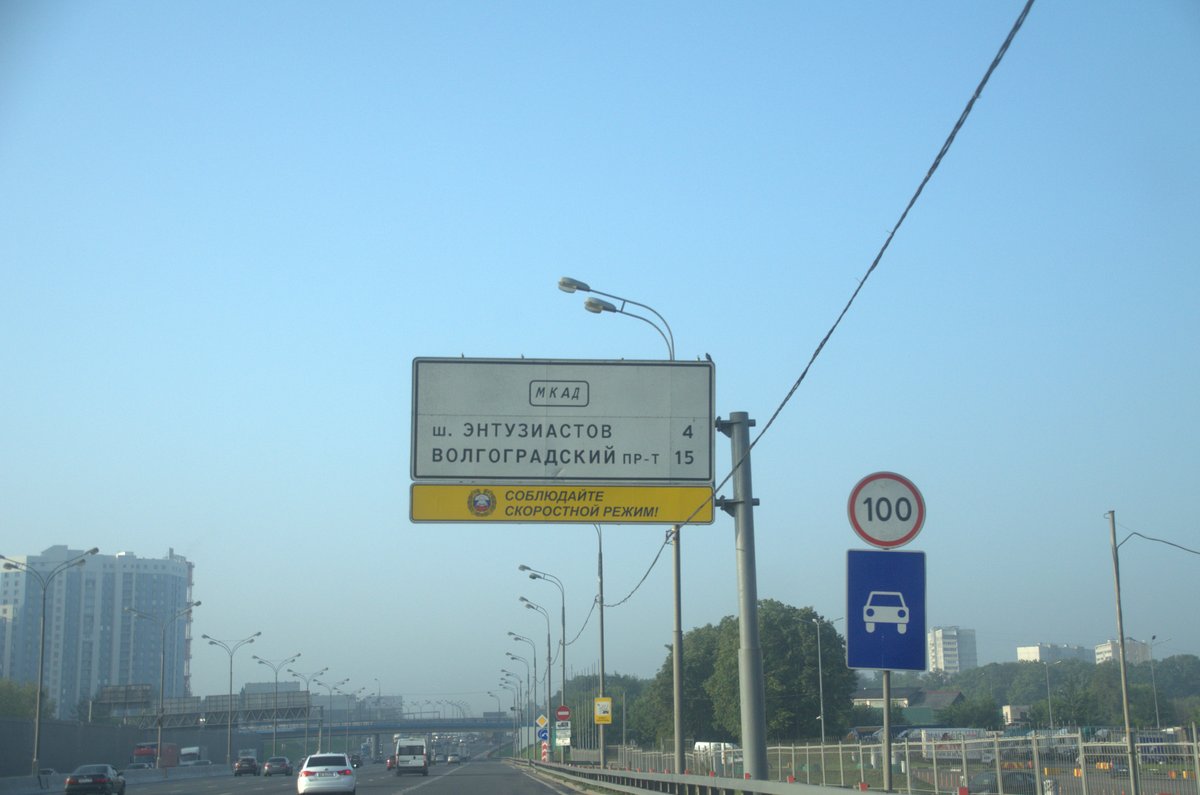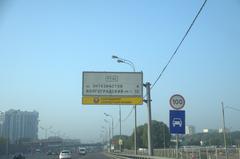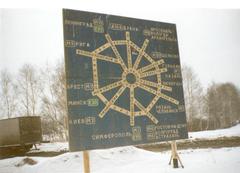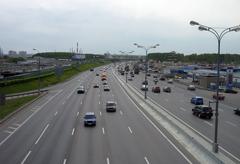
Moscow Ring Road (MKAD) Visiting Guide: Tickets, Hours, and Attractions
Date: 14/06/2025
Introduction
The Moscow Ring Road, known as MKAD (Московская кольцевая автомобильная дорога), is not just a major transportation artery encircling Russia’s capital—it’s a defining feature of Moscow’s urban landscape and cultural identity. Stretching approximately 109 kilometers, MKAD serves as both a practical infrastructure element and a symbolic boundary. Its presence has shaped Moscow’s development, marking the city’s traditional limits while enabling expansion into vibrant new districts. For visitors, understanding MKAD is key to navigating the city, accessing important attractions, and gaining insight into Moscow’s growth and structure. (Moscow Ring Road (MKAD) - Visitor Guide, History, and Travel Tips)
Table of Contents
- Introduction
- History of the MKAD
- Visiting the MKAD: Essential Information
- Cultural and Social Significance
- FAQs
- Conclusion
- References
History of the MKAD
Origins and Construction (1930s–1950s)
The idea for the MKAD emerged in the late 1930s, driven by Moscow’s rapid industrialization and the need for efficient transportation. Construction began in 1938, but World War II delayed progress. During the war, a provisional ring road was established using existing routes to support military and logistical needs.
Modernization and Expansion (1957–1990s)
Between 1957 and 1962, the MKAD was transformed into a modern highway, initially with four lanes in each direction. As Moscow expanded and traffic increased, significant upgrades were implemented in the 1990s—widening the road to five lanes each way, installing advanced lighting, and adding safety features to improve traffic flow and reduce accidents.
MKAD’s Role as a Boundary
For decades, the MKAD marked the official boundary of Moscow, with areas beyond informally referred to as “Zamkadye.” After the Soviet era, rapid development outside the ring blurred this boundary, integrating outlying districts into the greater metropolitan area and fostering the city’s dynamic growth.
Visiting the MKAD: Essential Information
Accessibility and Hours
- Open 24/7: The MKAD is a public highway accessible at all times.
- No Tolls or Tickets: Use of the MKAD is free for all vehicles; there are no entry fees.
- Pedestrian and Cyclist Access: Due to heavy traffic and highway design, walking or cycling on the MKAD is unsafe and not permitted.
Transportation Tips
- Traffic Conditions: Congestion peaks during weekday rush hours (7–10 AM, 5–8 PM). Plan travel outside these periods for smoother journeys.
- Navigation: Multi-level interchanges and frequent exits can be confusing—use reliable GPS apps for accurate directions.
- Public Transport: Numerous bus routes and metro stations connect to areas near the MKAD, offering alternatives to driving.
Nearby Attractions
While the MKAD itself is not a sightseeing destination, it provides direct access to a variety of notable locations:
- Airports: Sheremetyevo and Vnukovo airports are easily reached via MKAD exits.
- Shopping Centers: Major complexes like Mega Belaya Dacha and Auchan are situated along the ring.
- Parks: Losiny Ostrov National Park and Bittsevsky Park are notable green spaces adjacent to the MKAD, offering recreation and nature walks.
Photographic Viewpoints
Overpasses and elevated sections of the MKAD offer panoramic views of Moscow’s skyline and surrounding districts. These locations are ideal for urban photography, particularly for capturing the city’s sprawling suburbs and night-time cityscapes.
Tours and Events
There are no official tours dedicated solely to the MKAD, but some urban exploration and city development tours include segments along the ring to illustrate Moscow’s expansion and infrastructure.
Cultural and Social Significance
The MKAD is more than a ring road—it serves as a psychological, cultural, and socioeconomic delimiter within Moscow’s identity. The term “Zamkadye” underscores the distinction between the city core and its outlying districts, reflecting differences in lifestyle and urban development. The road has also influenced Moscow’s architectural patterns, economic zones, and social fabric. Efforts to minimize environmental impact—such as noise barriers and wildlife crossings—highlight the city’s commitment to sustainable growth.
Frequently Asked Questions (FAQs)
Q: Do I need a ticket or pay a toll to use the MKAD?
A: No, the MKAD is a toll-free public highway.
Q: Is it safe or permitted to walk or cycle on the MKAD?
A: No, due to high traffic volumes and highway design, pedestrian and bicycle access is prohibited.
Q: How is the MKAD connected to public transportation?
A: The MKAD interfaces with several metro stations, suburban trains, and bus routes, making it accessible without a private vehicle.
Q: When is the best time to travel on the MKAD to avoid traffic?
A: Midday and late evenings are typically less congested.
Conclusion
The Moscow Ring Road (MKAD) is a crucial part of Moscow’s urban fabric, functioning as both a major transportation route and a symbolic boundary. For travelers, knowing how to navigate the MKAD efficiently is key to accessing airports, shopping centers, parks, and suburban attractions. While the road itself may not be a conventional tourist spot, its role in shaping Moscow’s development makes it a fascinating subject for those interested in urban history and city planning.
For the most current information on traffic, transportation, and nearby attractions, consult the resources below and consider using the Audiala app for seamless trip planning.
Useful Resources and Further Reading
- Official Moscow Transport Website
- Moscow City Tourism Portal
- Real-time MKAD Traffic Updates
- Moscow Ring Road (MKAD) - Visitor Guide, History, and Travel Tips
- Visiting the Moscow Ring Road (MKAD): Essential Information for Travelers
- Cultural, Social, and Socioeconomic Significance of the MKAD
- Visiting the Monument to Minin and Pozharsky in Moscow: Hours, Tickets, and Visitor Guide
























































































































































































































































































